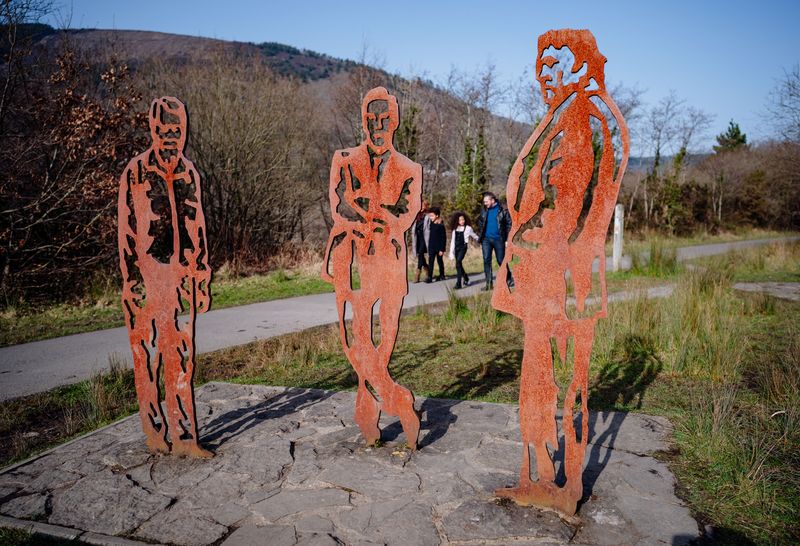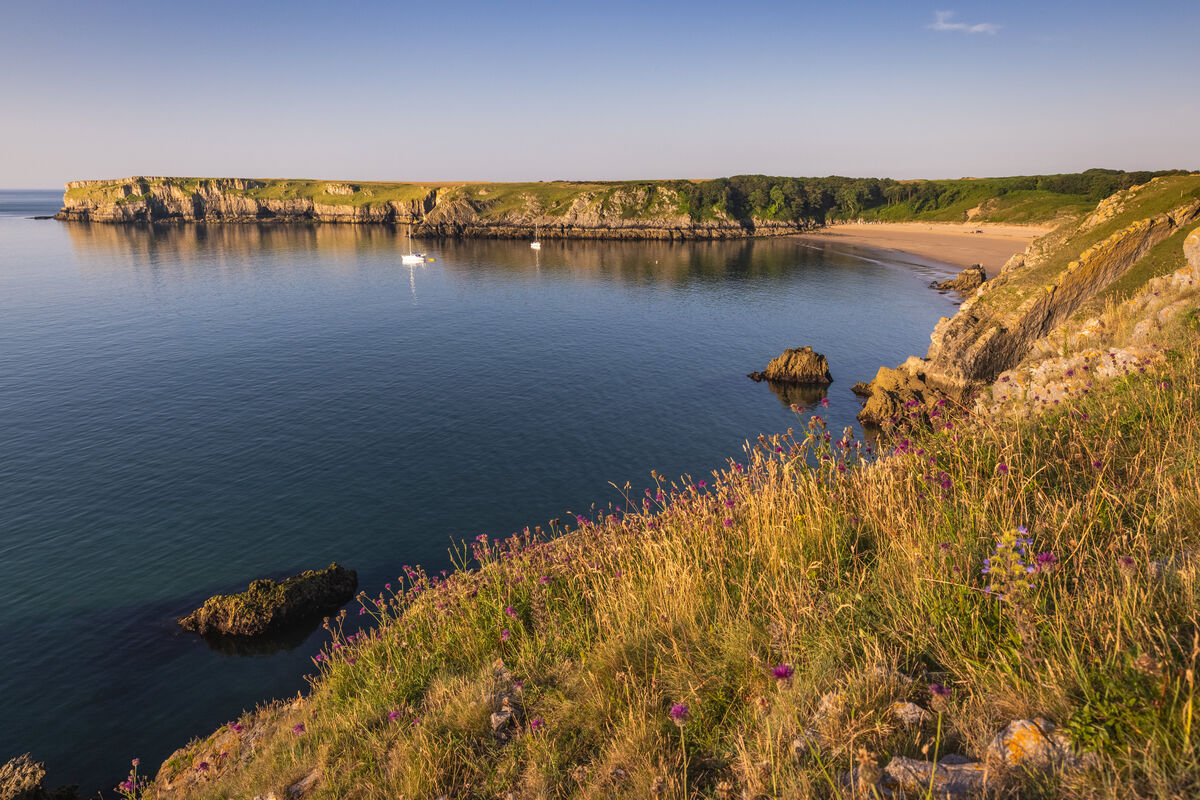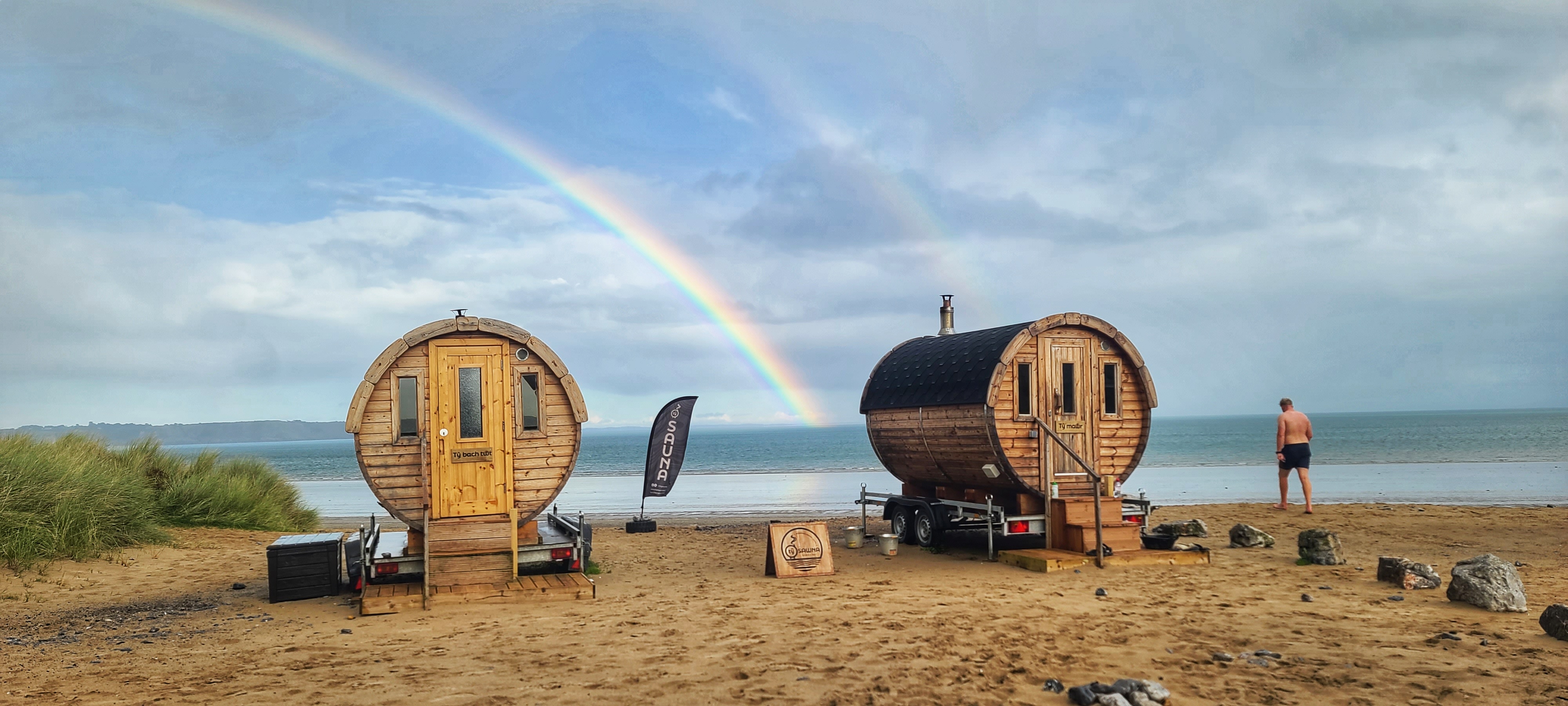Walking in the footsteps of a Welsh legend
A century of Richard Burton: Walking in the footsteps of a Welsh legend

Neath Port Talbot Council
November 10th marks one hundred years since the birth of Richard Burton; the Welsh boy from the valleys who became one of the world’s biggest stars, with the most magnetic of voices.
Whether you’re drawn to his powerful performances, his tumultuous love affair with Elizabeth Taylor, or to the Welsh landscapes that shaped him, the Wales Coast Path offers a unique way to rediscover the man behind the legend.
Few regions are more deeply connected to Burton than the valleys and coastline of South Wales. Along this stretch of the Wales Coast Path, you can walk through the same communities that nurtured his love of language, theatre, and home.
Over three days, trace a journey that follows his story from the Afan Valley, to the shores of Swansea Bay and beyond, a landscape that remained in his heart no matter how far he travelled.
Day 1 – Pontrhydyfen and Port Talbot
Richard Burton was born into a Welsh coal mining family and raised amid the close-knit communities of Pontrhydyfen, where Burton was born, and nearby Port Talbot, where he spent most of his formative years, and where several family members still reside today. During their marriage, Burton and Elizabeth Taylor would make frequent trips home to Pontrhyhyfen, which Taylor dubbed ‘Pontrhyd-heaven’.
In the morning
Head to Pontrhydyfen, where there is the first of two dedicated Richard Burton Trails that celebrate his early years.
The Birthplace Trail (4km) winds through Pontrhydyfen, revealing sweeping views across the Afan Valley and local landmarks such as Burton’s birthplace, Penhydd Street (where many of his relatives lived), the striking 1898 viaduct, and Bethel Chapel, where a memorial service was held in his honour in 1984.
In the afternoon
Continue down the valley to Port Talbot, the industrial coastal town that provided Burton with his earliest experiences of theatre and literature.
The Childhood Trail (2.5km) visits places such as the Taibach Community Education Centre, where a young Burton first performed, and Taibach Library, where he nurtured his lifelong love of words and literature. The route ends at Talbot Memorial Park, home to a statue and a poem written by Burton himself.
After the two trails, head to the Wales Coast Path and undertake the circular 14.4km Port Talbot - Margam walking trail. Here the enormous steelworks at Port Talbot and Margam pushes the Wales Coast Path slightly inland, largely onto roads. However, there is another route available, a little further inland, running across hillsides overlooking the urban and industrial sprawl. This route combines both route options into an elongated circular walk.
For dining ideas nearby, take a look at Visit Wales’ guide to eating in Neath Port Talbot
Day 2 – Swansea and Aberavon
A short journey west from Port Talbot brings you to Swansea. Here Burton appeared at the Swansea Grand Theatre, and today his legacy lives on at the Richard Burton Archives at Swansea University’s waterfront campus - home to letters, diaries, and manuscripts that offer glimpses into his private reflections.
In the morning
Book an appointment to explore the Richard Burton Archives, where you can uncover handwritten pages that reveal the mind of a man deeply connected to his Welsh identity. Afterwards, enjoy lunch in Mumbles, the picturesque seaside village often called the gateway to the Gower Peninsula.
Return east to Aberavon Beach, one of Wales’ longest beaches at 3 miles, and part of the Wales Coast Path. This is a place of wide horizons and Burton history - he and Taylor once famously landed their helicopter here during visits home.
Walk the promenade, or the sands themselves, enjoying the same sea air and sense of belonging that drew him back time and again.
Check out Visit Wales’ guide to eating in Swansea and Mumbles
Day 3 – Fishguard, Pembrokeshire
In 1971, Richard Burton returned to Wales to film Under Milk Wood, Dylan Thomas’s iconic works, in Fishguard, Pembrokeshire. The harbour town became the fictional village of Llareggub, with its winding lanes, weathered cottages, and sea views providing a perfect stage for Thomas’s lyrical world.
In the morning
Set off early for the drive west to Fishguard (approximately 1.5–2 hours). On arrival, wander through Lower Fishguard, where much of the filming took place. The slipway, harbour walls, and quayside cottages remain almost unchanged from when filming took place over fifty years ago.
In the afternoon
Round off your journey with a walk along this stunning section of the Wales Coast Path. Choose from a number of walking routes in the area, dependent on the time you have available and your fitness levels:
- Fishguard to Pwll Deri (14.5km)
- Newport to Fishguard (19.3km)
- Dinas Head Circular (13km)
- Fishguard Fort Circular (4.5km)
Feeling hungry? Check out the Visit Wales guide on where to eat in Fishguard
After your three-day Burton pilgrimage is over, why not extend your trip and spend a little longer exploring the beauty of Pembrokeshire and the west coast? Beyond Fishguard, the county offers breathtaking walks along the Wales Coast Path, including:
- Martin’s Haven to St Marloes (3.5km)
- Tenby (7km)
- Broad Haven South to Skrinkle Haven (17km)
- Whitesands to Solva (20.9km)
- Martin’s Haven to Dale (16km)
Find out more about these walks in Pembrokeshire
Image credits
- Richard Burton on set of Under Milk Wood (1971) © Trinity Mirror Mirrorpix Alamy Stock
- Port Talbot Steel statues credit Neath Port Talbot Council




